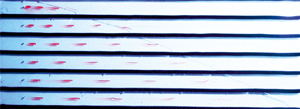Article contents
Dispersion induced by non-Newtonian gravity flow in a layered fracture or formation
Published online by Cambridge University Press: 21 September 2020
Abstract

Models are developed to grasp the combined effect of rheology and spatial layering on buoyancy-driven dispersion in geologic media. We consider a power-law (PL) or Herschel–Bulkley (HB) constitutive equation for the fluid, and an array of  $N$ independent layers in a vertical fracture or porous medium subject to the same upstream overpressure. Under these assumptions, analytical solutions are derived in self-similar form (PL) or based on an expansion (HB) for the nose of single-phase gravity currents advancing into the layers ahead of a pressurized body. The position and size of the body and nose and the shape of the latter are significantly influenced by the interplay of model parameters: flow behaviour index
$N$ independent layers in a vertical fracture or porous medium subject to the same upstream overpressure. Under these assumptions, analytical solutions are derived in self-similar form (PL) or based on an expansion (HB) for the nose of single-phase gravity currents advancing into the layers ahead of a pressurized body. The position and size of the body and nose and the shape of the latter are significantly influenced by the interplay of model parameters: flow behaviour index  $n$, dimensionless yield stress
$n$, dimensionless yield stress  $\kappa$ for HB fluids, number of layers
$\kappa$ for HB fluids, number of layers  $N$ and upstream overpressure. It is seen that layering produces (i) a relatively modest increase of the total flow rate with respect to the single layer of equal thickness, and (ii) macro-dispersion at the system scale in addition to local dispersion. The second longitudinal spatial moment of the solute cloud scales with time as
$N$ and upstream overpressure. It is seen that layering produces (i) a relatively modest increase of the total flow rate with respect to the single layer of equal thickness, and (ii) macro-dispersion at the system scale in addition to local dispersion. The second longitudinal spatial moment of the solute cloud scales with time as  $t^{2n/(n+1)}$ for power-law fluids. The macro-dispersion induced by the layering prevails upon local dispersion beyond a threshold time. Theoretical results for the fracture are validated against a set of experiments conducted within a Hele-Shaw cell consisting of six layers. Comparison with experimental results shows that the proposed model is able to capture the propagation of the current and the macro-dispersion due to the velocity difference between layers, typically over-predicting the former and under-predicting the latter.
$t^{2n/(n+1)}$ for power-law fluids. The macro-dispersion induced by the layering prevails upon local dispersion beyond a threshold time. Theoretical results for the fracture are validated against a set of experiments conducted within a Hele-Shaw cell consisting of six layers. Comparison with experimental results shows that the proposed model is able to capture the propagation of the current and the macro-dispersion due to the velocity difference between layers, typically over-predicting the former and under-predicting the latter.
- Type
- JFM Papers
- Information
- Copyright
- © The Author(s), 2020. Published by Cambridge University Press
References
REFERENCES
- 6
- Cited by



